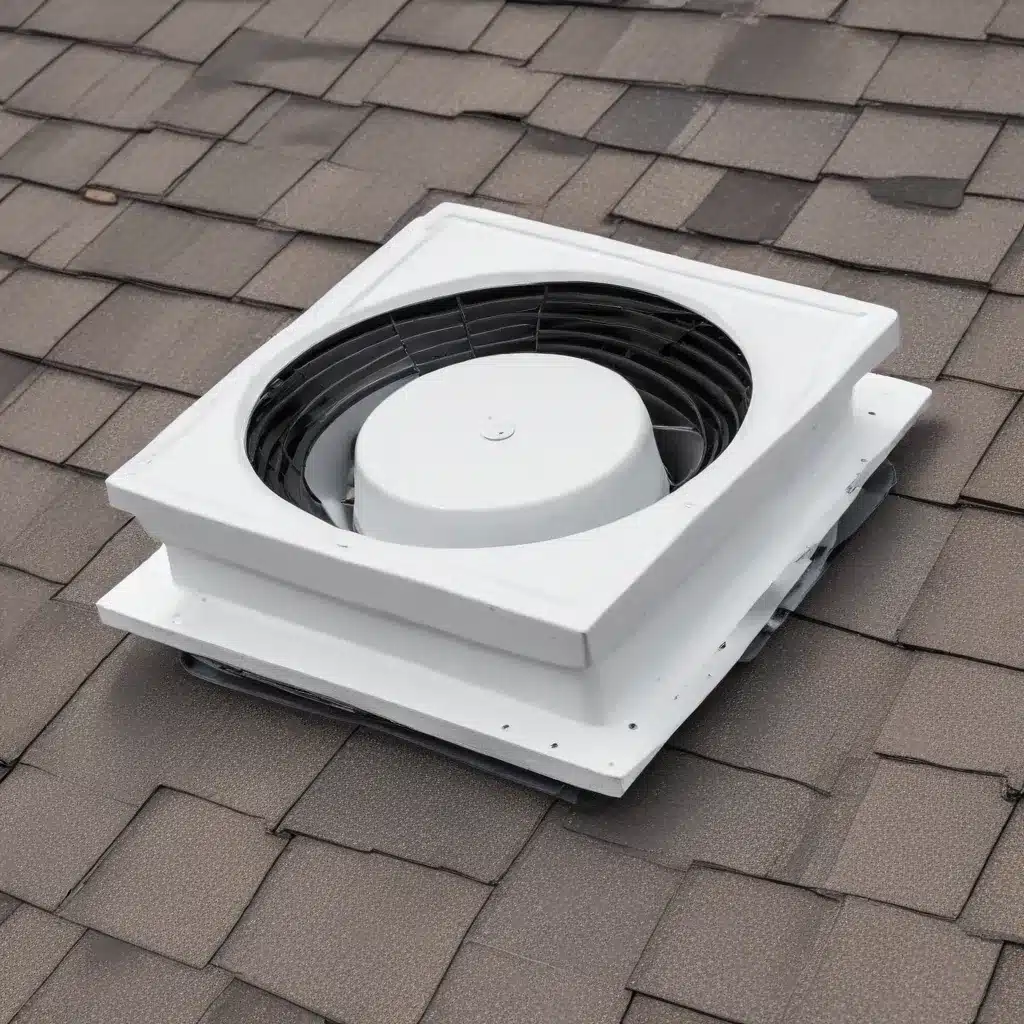
The Importance of Proper Roof Ventilation
As a seasoned roofing professional, I’ve seen firsthand how proper roof ventilation can make a significant difference in the indoor air quality (IAQ) of a home. Inadequate or poorly designed ventilation systems can lead to a buildup of moisture, pollutants, and even dangerous gases, compromising the health and comfort of the occupants. In this comprehensive article, we’ll explore the crucial role of roof ventilation in maintaining a healthy indoor environment and provide practical tips for upgrading your ventilation system.
Understanding the Impact of Ventilation on IAQ
Proper roof ventilation plays a vital role in regulating indoor air quality. When a home is not adequately ventilated, several issues can arise:
Moisture Buildup: Without sufficient airflow, excess moisture can accumulate in the attic, walls, and crawl spaces, leading to the growth of mold and mildew. This not only compromises the structural integrity of the home but can also trigger respiratory problems and allergic reactions.
Pollutant Concentration: Everyday activities like cooking, cleaning, and the use of household chemicals can release volatile organic compounds (VOCs) and other pollutants into the indoor air. Inadequate ventilation allows these contaminants to linger, potentially causing headaches, nausea, and long-term health problems.
Unsafe Gas Buildup: Homes with gas-powered appliances, such as furnaces, water heaters, and stoves, can experience a buildup of carbon monoxide and other combustion byproducts if the ventilation system is not functioning correctly. This poses a serious threat to the occupants’ safety.
Evaluating Your Existing Ventilation System
Before upgrading your roof ventilation, it’s essential to assess the current system’s performance. Consider the following factors:
-
Air Flow: Measure the airflow in different areas of your home, particularly in the attic and crawl spaces. Look for signs of stagnant air or areas with poor circulation.
-
Ventilation Openings: Examine the size, placement, and condition of your roof vents, gable vents, and soffit vents. Ensure they are unobstructed and functioning as intended.
-
Ventilation Equipment: If your home has a mechanical ventilation system, such as an exhaust fan or a whole-house ventilator, evaluate its efficiency and ensure it is properly sized for your home’s needs.
-
Insulation and Air Sealing: Assess the quality and placement of insulation in your attic and walls. Proper air sealing can also play a crucial role in improving ventilation and IAQ.
Upgrading Your Roof Ventilation System
Once you’ve assessed your current ventilation setup, it’s time to consider upgrades that can enhance indoor air quality. Here are some options to explore:
Attic Ventilation Improvements
-
Ridge Vents: Installing or upgrading ridge vents along the peak of your roof can create a natural air circulation system, allowing hot, stale air to escape while drawing in fresh air through the soffit vents.
-
Gable Vents: Strategically placed gable vents on opposing walls of your attic can improve air circulation and prevent moisture buildup.
-
Powered Attic Fans: Incorporating a thermostatically controlled, solar-powered attic fan can significantly boost air exchange, effectively removing excess heat and humidity from the attic space.
Whole-House Ventilation Systems
-
Mechanical Ventilation: Consider installing a whole-house mechanical ventilation system, such as an energy recovery ventilator (ERV) or a heat recovery ventilator (HRV). These systems continuously exchange stale indoor air with fresh outdoor air, improving IAQ while minimizing energy losses.
-
Balanced Ventilation: Ensure that your mechanical ventilation system is properly balanced, with equal amounts of air being supplied and exhausted. This helps maintain the desired pressure differential and prevents issues like backdrafting or air stratification.
-
Ductwork Sealing: Inspect and seal any leaks or gaps in your home’s ductwork to maximize the efficiency of your ventilation system and prevent uncontrolled air exchange.
Ventilation Upgrades for Specific Areas
-
Kitchen and Bathrooms: Install high-powered exhaust fans in these moisture-prone areas to quickly remove steam, odors, and pollutants.
-
Crawl Spaces and Basements: Seal and insulate these spaces, then incorporate dedicated ventilation to prevent moisture buildup and the intrusion of radon or other soil-borne gases.
-
Humidity Control: Consider adding a dehumidifier or a whole-house humidifier to maintain optimal indoor humidity levels, further enhancing air quality and comfort.
Addressing Ventilation Challenges
In some cases, you may encounter specific obstacles when upgrading your roof ventilation system. Here are a few common challenges and potential solutions:
-
Existing Knob-and-Tube Wiring: If your home still has outdated knob-and-tube wiring, it’s crucial to have a licensed electrician assess the system and determine the safest approach for adding insulation and ventilation upgrades.
-
Asbestos-Containing Materials: If your home was built before the 1980s, there may be asbestos-containing materials in the attic or walls. Consult with a professional abatement contractor to ensure the safe removal and disposal of these hazardous materials before proceeding with ventilation upgrades.
-
Tight Building Envelopes: Modern homes are often built with highly efficient, airtight construction, which can make it challenging to achieve the necessary air exchange. In such cases, you may need to incorporate mechanical ventilation to supplement natural airflow.
Importance of Professional Installation
Proper roof ventilation is a complex system that requires careful design and installation. It’s strongly recommended to work with a reputable Roofers in Northampton contractor who specializes in ventilation upgrades. They can provide a comprehensive assessment, recommend the most suitable solutions, and ensure the work is carried out safely and to the highest standards.
Conclusion
Upgrading your roof ventilation system is a crucial step in maintaining a healthy indoor environment. By addressing moisture buildup, reducing pollutant concentrations, and preventing unsafe gas accumulation, you can significantly improve the air quality in your home and ensure the comfort and well-being of your family. Remember to work with experienced roofing professionals to get the most out of your ventilation system upgrades.

